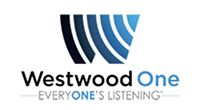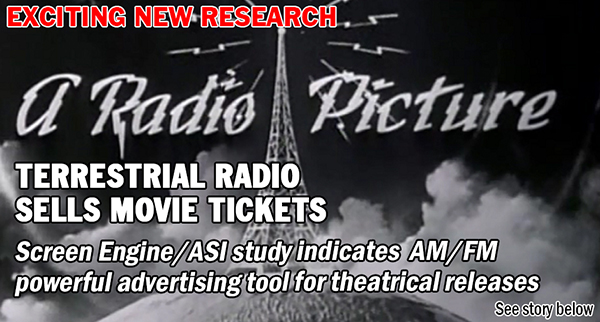 NAB2022: Don’t Blink. “As if technology hadn’t already disrupted media consumption pre-pandemic,” consultant Holland Cooke finds broadcasters gathering in Las Vegas for the first NAB Show in three years “somewhat future-shocked, yet curious and enthused.” HC’s notes from Monday sessions point to threats and opportunities in the New Normal. Read it here.
NAB2022: Don’t Blink. “As if technology hadn’t already disrupted media consumption pre-pandemic,” consultant Holland Cooke finds broadcasters gathering in Las Vegas for the first NAB Show in three years “somewhat future-shocked, yet curious and enthused.” HC’s notes from Monday sessions point to threats and opportunities in the New Normal. Read it here.
WWO Blog: Nielsen Data Shows Spoken-Word AM/FM Content Accounts for 36% of American Streaming. The Westwood One Audio Active Group blog post is a “comprehensive analysis of AM/FM radio streaming” based on Q4 2021 data from Edison Research’s quarterly “Share of Ear” study. Among the key conclusions from the study are: 1) The streaming shares of spoken-word AM/FM radio stations are nearly double their over-the-air shares. Spoken-word AM/FM radio station streams (news/talk, sports, talk/personality, Spanish news/talk) represent 36% of all American streaming listening, 89% greater than the over-the-air share (19%) of spoken word stations; 2) 89% of the AM/FM radio streaming audience resides in the DMA market where they stream. Marketers can purchase time on AM/FM radio station streams with the confidence that their ads will reach consumers in that local market; 3) There is wide variation in the amount of AM/FM radio stream listening that occurs in local markets. According to Nielsen’s analysis of the February 2022 Portable People Meter data, 18.4% of all AM/FM radio listening in Philadelphia occurs via the stream compared to only 3.9% of listening in Las Vegas; and 4) AM/FM radio streaming audiences are employed, upscale, and most are 35-64. The streams of AM/FM radio stations are highly desirable to advertisers. Compared to the over-the-air AM/FM radio audience in Nielsen’s 48 Portable Meter Markets, streaming audiences are 14% more likely to be employed full time, 30% more likely to have a $75K+ household income, and 11% more likely to be aged 35-64. See the complete study results here.
(news/talk, sports, talk/personality, Spanish news/talk) represent 36% of all American streaming listening, 89% greater than the over-the-air share (19%) of spoken word stations; 2) 89% of the AM/FM radio streaming audience resides in the DMA market where they stream. Marketers can purchase time on AM/FM radio station streams with the confidence that their ads will reach consumers in that local market; 3) There is wide variation in the amount of AM/FM radio stream listening that occurs in local markets. According to Nielsen’s analysis of the February 2022 Portable People Meter data, 18.4% of all AM/FM radio listening in Philadelphia occurs via the stream compared to only 3.9% of listening in Las Vegas; and 4) AM/FM radio streaming audiences are employed, upscale, and most are 35-64. The streams of AM/FM radio stations are highly desirable to advertisers. Compared to the over-the-air AM/FM radio audience in Nielsen’s 48 Portable Meter Markets, streaming audiences are 14% more likely to be employed full time, 30% more likely to have a $75K+ household income, and 11% more likely to be aged 35-64. See the complete study results here.
Audacy and FOX News Audio Expand Partnership. This expansion of the relationship between Audacy and FOX News Audio includes FOX News Audio’s linear talk radio streaming content migrating to AmperWave, Audacy’s cloud-based distribution and monetization platform for live and on-demand audio streams. The expanded agreement will also make Audacy the exclusive third-party ad sales representation of FOX News Audio’s streaming inventory on the audio network’s digital properties. The new agreement gives FOX streaming capabilities, sales representation, and new capabilities for live broadcasts on its streaming services. FOX
monetization platform for live and on-demand audio streams. The expanded agreement will also make Audacy the exclusive third-party ad sales representation of FOX News Audio’s streaming inventory on the audio network’s digital properties. The new agreement gives FOX streaming capabilities, sales representation, and new capabilities for live broadcasts on its streaming services. FOX  News Audio will be the first of Audacy’s affiliate partners to enable “Rewind” capabilities. Audacy VP of business development Corey Podolsky says, “Audacy knows that our industry is changing with listeners consuming more audio on streams than ever before. As a strategic partner, we are excited to lean into that industry shift with FOX News Audio to deliver new capabilities via our AmperWave streaming platform. Coupled with our ability to now offer world-class hosting and ad serving capabilities, this will take our relationship to a whole new level.” FOX News audio executive director of business development and digital audio operations William Sanchez adds, “We’re thrilled to expand our partnership with Audacy and collaborate on serving the growing needs of our listeners. We look forward to improving our audience’s experience with AmperWave’s hosting technology on our platforms.”
News Audio will be the first of Audacy’s affiliate partners to enable “Rewind” capabilities. Audacy VP of business development Corey Podolsky says, “Audacy knows that our industry is changing with listeners consuming more audio on streams than ever before. As a strategic partner, we are excited to lean into that industry shift with FOX News Audio to deliver new capabilities via our AmperWave streaming platform. Coupled with our ability to now offer world-class hosting and ad serving capabilities, this will take our relationship to a whole new level.” FOX News audio executive director of business development and digital audio operations William Sanchez adds, “We’re thrilled to expand our partnership with Audacy and collaborate on serving the growing needs of our listeners. We look forward to improving our audience’s experience with AmperWave’s hosting technology on our platforms.”
TALKERS News Notes. San Antonio news/talk outlet KTSA-AM is celebrating its 100th anniversary on May 9. As part of the celebration, the Alpha Media station has produced a video that encapsulates the 300-year history of the city that you can see here…..Sports talk WBFG-FM, Parker’s Crossroads, Tennessee – in the Jackson, Tennessee market, is now owned and operated by Dan Reaves, who acquired the station from Lexington Broadcasting. The Jackson Sun reports that the change of ownership became official on April 1. Reaves is a well-known radio personality in the region and is hosting the morning drive show. George B. hosts the afternoon drive daypart and ESPN Radio content airs the rest of the day. The station will remain an affiliate for the Tennessee Volunteer Sports Network and the Memphis Grizzlies broadcasts…..SiriusXM and I Am Athlete, the media network founded by former NFL All-Pro receiver Brandon Marshall, announce a new, expansive content deal that includes a live nightly radio show and other projects. I Am Athlete and SiriusXM will produce a new show called “I Am Athlete Tonight” that will air live from 7:00 pm to 9:00 pm ET hosted by former NFL defensive end Leger Douzable and include a case of rotating co-hosts including Marshall, former NFL players LeSean McCoy, Brandon Flowers and Adam “Pacman” Jones, former NBA player Antoine Walker, former WNBA player Chantel Tremitiere and journalist Omar Kelly.
anniversary on May 9. As part of the celebration, the Alpha Media station has produced a video that encapsulates the 300-year history of the city that you can see here…..Sports talk WBFG-FM, Parker’s Crossroads, Tennessee – in the Jackson, Tennessee market, is now owned and operated by Dan Reaves, who acquired the station from Lexington Broadcasting. The Jackson Sun reports that the change of ownership became official on April 1. Reaves is a well-known radio personality in the region and is hosting the morning drive show. George B. hosts the afternoon drive daypart and ESPN Radio content airs the rest of the day. The station will remain an affiliate for the Tennessee Volunteer Sports Network and the Memphis Grizzlies broadcasts…..SiriusXM and I Am Athlete, the media network founded by former NFL All-Pro receiver Brandon Marshall, announce a new, expansive content deal that includes a live nightly radio show and other projects. I Am Athlete and SiriusXM will produce a new show called “I Am Athlete Tonight” that will air live from 7:00 pm to 9:00 pm ET hosted by former NFL defensive end Leger Douzable and include a case of rotating co-hosts including Marshall, former NFL players LeSean McCoy, Brandon Flowers and Adam “Pacman” Jones, former NBA player Antoine Walker, former WNBA player Chantel Tremitiere and journalist Omar Kelly.
Musk to Acquire Twitter, Russia-Ukraine War, COVID-19, January 6 Investigation, Financial Markets/Inflation, Midterms/Trump & the GOP, and Immigration Issues Among Top News/Talk Stories Yesterday (4/25). After more than a week of attempts, Elon Musk’s $54.20 per share acquisition of Twitter has been accepted prompting questions about what the new Twitter will look like; Russia’s ongoing invasion of Ukraine, its effects on the global economy, and Vladimir Putin’s other European targets; the battle over mask mandates, the dominant BA.2 variant’s spread across the U.S., and the harsh lockdowns in China; the revelations of Republican politicians’ communications before and during the January 6 Capitol attack; concerns about bearish activity on the world’s financial markets and the effects of high gas and food prices on American families; the battle for control of Congress in November’s midterm elections and Donald Trump’s influence over the GOP; and Texas Governor Greg Abbott’s transportation of migrants to Washington, DC and U.S. immigration policy were some of the most-talked-about stories on news/talk radio yesterday, according to ongoing research from TALKERS magazine.
Share this with your network
 2) Marketers and media agencies significantly overestimate audience shares to Pandora/Spotify and massively underestimate AM/FM radio audiences; and 3) Interestingly, as older demographics flock to podcasts, the median age of the podcast audience ages sharply from 29 in 2017 to 39. The study notes that “in 2017, podcasts’ daily reach was greatest among 18-24s. Eight years later, podcasts’ daily reach has surged, especially in older demographics. The older the age group, the greater the growth in the podcast daily audience. Today, podcasts’ greatest reach centers on 25-44s, with significant growth among 45-64s.” See the full blog post here.
2) Marketers and media agencies significantly overestimate audience shares to Pandora/Spotify and massively underestimate AM/FM radio audiences; and 3) Interestingly, as older demographics flock to podcasts, the median age of the podcast audience ages sharply from 29 in 2017 to 39. The study notes that “in 2017, podcasts’ daily reach was greatest among 18-24s. Eight years later, podcasts’ daily reach has surged, especially in older demographics. The older the age group, the greater the growth in the podcast daily audience. Today, podcasts’ greatest reach centers on 25-44s, with significant growth among 45-64s.” See the full blog post here.


 number of issues based on data from Edison Research’s ongoing Share of Ear study. One aspect of AM/FM radio’s strength is its ability to reach the country’s political segments. The post notes, “Among registered voters, AM/FM radio has a 67% share of ad-supported audio, followed by podcasts (20%). Whether the target is Independents, Republicans, or Democrats, AM/FM radio shares are in the mid-60s to low 70s.”
number of issues based on data from Edison Research’s ongoing Share of Ear study. One aspect of AM/FM radio’s strength is its ability to reach the country’s political segments. The post notes, “Among registered voters, AM/FM radio has a 67% share of ad-supported audio, followed by podcasts (20%). Whether the target is Independents, Republicans, or Democrats, AM/FM radio shares are in the mid-60s to low 70s.”  “creative quality is the number one sales driver” and this is often a surprise to advertisers and media agencies who think media tactics (targeting, reach, etc.) drive the most sales. It’s for good reason that everyone wants high brand awareness. A major study from TikTok reveals the greater a brand’s awareness, the greater the purchase conversion. Brands with high aided awareness have 2.86x greater conversion rates compared to low awareness brands. But not all categories operate similarly, Podscribe says that purchase conversion varies widely by advertising category and advises that it’s important to understand the purchase conversion benchmarks for your product category.
“creative quality is the number one sales driver” and this is often a surprise to advertisers and media agencies who think media tactics (targeting, reach, etc.) drive the most sales. It’s for good reason that everyone wants high brand awareness. A major study from TikTok reveals the greater a brand’s awareness, the greater the purchase conversion. Brands with high aided awareness have 2.86x greater conversion rates compared to low awareness brands. But not all categories operate similarly, Podscribe says that purchase conversion varies widely by advertising category and advises that it’s important to understand the purchase conversion benchmarks for your product category.  study of 303 media agencies and marketers conducted in August 2024 found the perceived combined audience share of Pandora/Spotify is 43%, much greater than the perceived share of AM/FM radio (27%). In reality, “According to the Q1 2025 Share of Ear, AM/FM radio’s persons 18+ share of ad-supported audio (68%) is 14 times larger than ad-supported Pandora (5%) and ad-supported Spotify (5%).” The data also reveals that podcasts take the second-place spot with a 20% share. Ad-supported Pandora (5%), ad-supported Spotify (5%), and ad-supported SiriusXM (3%) lag distantly.
study of 303 media agencies and marketers conducted in August 2024 found the perceived combined audience share of Pandora/Spotify is 43%, much greater than the perceived share of AM/FM radio (27%). In reality, “According to the Q1 2025 Share of Ear, AM/FM radio’s persons 18+ share of ad-supported audio (68%) is 14 times larger than ad-supported Pandora (5%) and ad-supported Spotify (5%).” The data also reveals that podcasts take the second-place spot with a 20% share. Ad-supported Pandora (5%), ad-supported Spotify (5%), and ad-supported SiriusXM (3%) lag distantly.  ad-supported media campaign. Among the findings is that in order to ensure that digital audio buys are effective, marketers should commit news/talk and sports stations because they represent 28% of all 25-54 AM/FM radio streaming audiences. Among 25-54s, spoken-word formats have a massive 28% streaming share, 2.4 times larger than the overall spoken word share of 12%. The news/talk format has a 6.7% share of total AM/FM radio listening. The streaming share for news/talk is 15.4% — more than double its total share. The sports format has a 12.5 share of the streaming audience, 2.5 times bigger than its overall 5 share. Further, the data indicates that for the 18-34 demographic, sports and news/talk streaming is a combined 19.6% share.
ad-supported media campaign. Among the findings is that in order to ensure that digital audio buys are effective, marketers should commit news/talk and sports stations because they represent 28% of all 25-54 AM/FM radio streaming audiences. Among 25-54s, spoken-word formats have a massive 28% streaming share, 2.4 times larger than the overall spoken word share of 12%. The news/talk format has a 6.7% share of total AM/FM radio listening. The streaming share for news/talk is 15.4% — more than double its total share. The sports format has a 12.5 share of the streaming audience, 2.5 times bigger than its overall 5 share. Further, the data indicates that for the 18-34 demographic, sports and news/talk streaming is a combined 19.6% share.  ABX AM/FM radio creative study for RAB proves legendary marketing professor Mark Ritson was right; 2) Wear-out of AM/FM radio ads is virtually non-existent: Only two of 25,000 ads showed a decline in some creative effectiveness metrics. Two major creative effectiveness measures, branding and messaging, showed no wear-out; 3) The two ads showing differences were at the top end of cumulative spending and time in market: Two years in market and $8M+ of spend is where creativeness effectiveness might start to wane; 4) Repeat testing of 10 of the 12 longest running AM/FM radio ads reveals no statistically significant erosion; and 5) The giants of marketing effectiveness and creative testing conclude wear-out is non-existent: Take it from Les Binet/Sarah Carter, ABX, Kantar, System1, and Analytic Partners.
ABX AM/FM radio creative study for RAB proves legendary marketing professor Mark Ritson was right; 2) Wear-out of AM/FM radio ads is virtually non-existent: Only two of 25,000 ads showed a decline in some creative effectiveness metrics. Two major creative effectiveness measures, branding and messaging, showed no wear-out; 3) The two ads showing differences were at the top end of cumulative spending and time in market: Two years in market and $8M+ of spend is where creativeness effectiveness might start to wane; 4) Repeat testing of 10 of the 12 longest running AM/FM radio ads reveals no statistically significant erosion; and 5) The giants of marketing effectiveness and creative testing conclude wear-out is non-existent: Take it from Les Binet/Sarah Carter, ABX, Kantar, System1, and Analytic Partners.  is a mistake. Some of the findings include: 1) In a typical day, ad-supported digital audio reaches less than a third of America while AM/FM radio reaches two-thirds of America. Combined, ad-supported digital audio and AM/FM radio reach 74% of the U.S. daily; 2) Between ad-supported Spotify and AM/FM radio, most people only listen to AM/FM radio; 3) Between ad-supported Pandora and AM/FM radio, most people only listen to AM/FM radio; 4) The U.S. ad-supported audio clock: Podcasts and AM/FM radio represent nearly 90% of tuning minutes; 5) With a towering in-car share of 86%, AM/FM radio is the primary way to reach consumers on the path to purchase; The proportion of AM/FM radio in-car listening has surged, returning to pre-pandemic norms.
is a mistake. Some of the findings include: 1) In a typical day, ad-supported digital audio reaches less than a third of America while AM/FM radio reaches two-thirds of America. Combined, ad-supported digital audio and AM/FM radio reach 74% of the U.S. daily; 2) Between ad-supported Spotify and AM/FM radio, most people only listen to AM/FM radio; 3) Between ad-supported Pandora and AM/FM radio, most people only listen to AM/FM radio; 4) The U.S. ad-supported audio clock: Podcasts and AM/FM radio represent nearly 90% of tuning minutes; 5) With a towering in-car share of 86%, AM/FM radio is the primary way to reach consumers on the path to purchase; The proportion of AM/FM radio in-car listening has surged, returning to pre-pandemic norms.  were three or four minutes. Under the old five-minute listening qualifier rule, none of this tuning would have received listening credit. Effective with the January 2025 PPM survey, Nielsen is now crediting tuning occasions that are three minutes or greater. What are the results so far? First, drive times and weekends experience the greatest growth. Comparing January 2024 to January 2025 for persons 12+ and 25-54 reveals double-digit growth for all dayparts. Weekends and drives times have the greatest increases. Second, AM/FM radio’s listening profile now skews younger: Every major buying demographic has a higher composition of listening. Persons 65+ is the only demographic where AM/FM radio’s audience composition is reduced. Persons 25-54, AM/FM radio’s most popular buying demographic, experiences the largest increase in audience composition. Persons 18-49 have the next largest growth. And third, format shares remain stable. Versus October 2024, PPM January 2025 format shares are very consistent. An uptick in news/talk AQH composition is most likely more due to a heavier news cycle (major weather stories and a new president) than a PPM methodology enhancement. In local markets, there is more share variation.
were three or four minutes. Under the old five-minute listening qualifier rule, none of this tuning would have received listening credit. Effective with the January 2025 PPM survey, Nielsen is now crediting tuning occasions that are three minutes or greater. What are the results so far? First, drive times and weekends experience the greatest growth. Comparing January 2024 to January 2025 for persons 12+ and 25-54 reveals double-digit growth for all dayparts. Weekends and drives times have the greatest increases. Second, AM/FM radio’s listening profile now skews younger: Every major buying demographic has a higher composition of listening. Persons 65+ is the only demographic where AM/FM radio’s audience composition is reduced. Persons 25-54, AM/FM radio’s most popular buying demographic, experiences the largest increase in audience composition. Persons 18-49 have the next largest growth. And third, format shares remain stable. Versus October 2024, PPM January 2025 format shares are very consistent. An uptick in news/talk AQH composition is most likely more due to a heavier news cycle (major weather stories and a new president) than a PPM methodology enhancement. In local markets, there is more share variation.  Whitepaper: The Extraordinary Cost of Dull,” the analysis notes that 1) Neutrality, the absence of emotion, is the most common reaction to ads; 2) Business-to-business ads are even duller with greater neutral “feeling nothing” responses; and 3)
Whitepaper: The Extraordinary Cost of Dull,” the analysis notes that 1) Neutrality, the absence of emotion, is the most common reaction to ads; 2) Business-to-business ads are even duller with greater neutral “feeling nothing” responses; and 3)  ideal medium platforms for retailers and e-commerce brands: Heavy audio listeners are more likely to shop online. Heavy AM/FM radio and podcast listeners also spend more online than TV viewers. AM/FM radio listeners and heavy podcast listeners over-index on Amazon Prime membership and purchase intent; 2) AM/FM radio makes your TV better – “20 gets you 50”: Nielsen Media Impact optimizations reveal shifting more media weight to AM/FM radio generates significantly more reach, especially among younger demographics 18-49. AM/FM radio does an extraordinary job increasing campaign reach among light TV viewers, who are far less likely to see retailer TV ads. The rule of thumb is “20 gets you 50”: a 20% shift of a TV media budget to AM/FM Radio generates a 50% increase in reach; and 3) Audio holiday AM/FM radio campaigns work: Consumers exposed to an Amazon holiday AM/FM radio campaign have higher brand equity (awareness, ad recall, prior purchase and purchase intent). Nielsen sales effect studies reveal AM/FM radio campaigns for retailers generate significant return on advertising spend: $15 dollars of incremental sales for every dollar of AM/FM radio advertising.
ideal medium platforms for retailers and e-commerce brands: Heavy audio listeners are more likely to shop online. Heavy AM/FM radio and podcast listeners also spend more online than TV viewers. AM/FM radio listeners and heavy podcast listeners over-index on Amazon Prime membership and purchase intent; 2) AM/FM radio makes your TV better – “20 gets you 50”: Nielsen Media Impact optimizations reveal shifting more media weight to AM/FM radio generates significantly more reach, especially among younger demographics 18-49. AM/FM radio does an extraordinary job increasing campaign reach among light TV viewers, who are far less likely to see retailer TV ads. The rule of thumb is “20 gets you 50”: a 20% shift of a TV media budget to AM/FM Radio generates a 50% increase in reach; and 3) Audio holiday AM/FM radio campaigns work: Consumers exposed to an Amazon holiday AM/FM radio campaign have higher brand equity (awareness, ad recall, prior purchase and purchase intent). Nielsen sales effect studies reveal AM/FM radio campaigns for retailers generate significant return on advertising spend: $15 dollars of incremental sales for every dollar of AM/FM radio advertising.  content, providing an accurate assessment of the audience’s attentiveness and engagement.” Some of the key findings include: 1) Despite lacking “sight, sound, and motion,” AM/FM radio programming was +13% more engaging than Mediaprobe’s norm for television in the U.S. For advertisers, this means the AM/FM radio context for their ads has greater engagement than the TV context; 2) Overall, AM/FM radio advertising’s Emotional Impact Score (EIS) outperformed TV advertising by +12%. These new findings validate the recently released Dentsu/Lumen study, which revealed audio ads outperform video for attention and brand recall; 3) AM/FM radio news was the most impactful genre, consistently measuring as a high-quality contextual environment for advertising (+14% greater than Mediaprobe TV News norms and +8% than total AM/FM radio); 4) Mediaprobe audio benchmarks reveal the sound contrast between AM/FM radio programming and the ads drives higher attention and brand recall. For example, ads with music and jingles perform very well in spoken word programming due to the contrast; and 5) Creative best practices: Use female voiceovers, jingles, and include five brand mentions.
content, providing an accurate assessment of the audience’s attentiveness and engagement.” Some of the key findings include: 1) Despite lacking “sight, sound, and motion,” AM/FM radio programming was +13% more engaging than Mediaprobe’s norm for television in the U.S. For advertisers, this means the AM/FM radio context for their ads has greater engagement than the TV context; 2) Overall, AM/FM radio advertising’s Emotional Impact Score (EIS) outperformed TV advertising by +12%. These new findings validate the recently released Dentsu/Lumen study, which revealed audio ads outperform video for attention and brand recall; 3) AM/FM radio news was the most impactful genre, consistently measuring as a high-quality contextual environment for advertising (+14% greater than Mediaprobe TV News norms and +8% than total AM/FM radio); 4) Mediaprobe audio benchmarks reveal the sound contrast between AM/FM radio programming and the ads drives higher attention and brand recall. For example, ads with music and jingles perform very well in spoken word programming due to the contrast; and 5) Creative best practices: Use female voiceovers, jingles, and include five brand mentions.  small attributed lift (0% to +3% lift) to excellent (+15% or more). Across the 17 campaigns analyzed, the average attributed lift was +14%. Three tax preparation service campaigns achieved “excellent” status ranging from a +30% to +48% attributed lift; 2) On average, the 17 AM/FM radio campaigns saw the highest percentage of impressions at the start of the week, peaking on Mondays and Tuesdays. Compared to the Nielsen impressions, the AM/FM radio campaigns outperformed on Saturday, Sunday, and Monday. Advertisers should increase their use of AM/FM radio on the weekends. AM/FM radio campaigns on weekends drive impact and results; and 3) On average, evenings have a greater share of attributed web sessions due to available devices and free time of consumers. Mornings historically underdeliver their share of impressions since consumers are busy getting ready for work and school. This expected pattern should not be a reason to move campaign weight out of morning drive. Morning drive exposure results in web sessions during later dayparts when consumers have the time and available devices to respond.
small attributed lift (0% to +3% lift) to excellent (+15% or more). Across the 17 campaigns analyzed, the average attributed lift was +14%. Three tax preparation service campaigns achieved “excellent” status ranging from a +30% to +48% attributed lift; 2) On average, the 17 AM/FM radio campaigns saw the highest percentage of impressions at the start of the week, peaking on Mondays and Tuesdays. Compared to the Nielsen impressions, the AM/FM radio campaigns outperformed on Saturday, Sunday, and Monday. Advertisers should increase their use of AM/FM radio on the weekends. AM/FM radio campaigns on weekends drive impact and results; and 3) On average, evenings have a greater share of attributed web sessions due to available devices and free time of consumers. Mornings historically underdeliver their share of impressions since consumers are busy getting ready for work and school. This expected pattern should not be a reason to move campaign weight out of morning drive. Morning drive exposure results in web sessions during later dayparts when consumers have the time and available devices to respond.  a host-read ad on a podcast or AM/FM radio show drives powerful brand impact and sales effect and positive emotional impact is what measures a successful campaign. System1 studied host-read ads and devised a rating system that correlates creative quality with long-term share growth – in layman’s terms, “the more you feel, the more you buy.” But the study found that only 17% of the ads tested rated high enough to have the sufficient emotional impact necessary to lift long-term brand share by between 1% and 3%.
a host-read ad on a podcast or AM/FM radio show drives powerful brand impact and sales effect and positive emotional impact is what measures a successful campaign. System1 studied host-read ads and devised a rating system that correlates creative quality with long-term share growth – in layman’s terms, “the more you feel, the more you buy.” But the study found that only 17% of the ads tested rated high enough to have the sufficient emotional impact necessary to lift long-term brand share by between 1% and 3%.  advertising. In 2016 and 2017, direct response represented the vast majority of podcast advertising. From 2018 to 2021, the proportion of podcast ad spend was equally split between brand and direct response.” The post says there are four major implications of the shift to podcast brand advertising: 1) Targeting will become much broader: Wide campaign reach will become the priority with a goal of “being known before you’re needed”; 2) Creative will shift to become more entertaining and emotion based: The objective will be to stir passions and create positive feelings and associations with ads that people find interesting and enjoyable; 3) Brand safety and suitability measurement will become more crucial: Firms like Barometer will become powerful resources to help marketers find the right context for their campaigns with nuanced data; and 4) Measurement will focus on how well campaigns build memories to ensure brands are “easy to mind and easy to find”: Key performance indicators are brand awareness, brand consideration, and brand preference.
advertising. In 2016 and 2017, direct response represented the vast majority of podcast advertising. From 2018 to 2021, the proportion of podcast ad spend was equally split between brand and direct response.” The post says there are four major implications of the shift to podcast brand advertising: 1) Targeting will become much broader: Wide campaign reach will become the priority with a goal of “being known before you’re needed”; 2) Creative will shift to become more entertaining and emotion based: The objective will be to stir passions and create positive feelings and associations with ads that people find interesting and enjoyable; 3) Brand safety and suitability measurement will become more crucial: Firms like Barometer will become powerful resources to help marketers find the right context for their campaigns with nuanced data; and 4) Measurement will focus on how well campaigns build memories to ensure brands are “easy to mind and easy to find”: Key performance indicators are brand awareness, brand consideration, and brand preference.  monthly, and 77% have ever listened to podcasts. “All of this podcast and AM/FM radio audience duplication means there are great cross-promotion opportunities.” Among the podcast audience, over half the ad-supported time spent goes to podcasts themselves at a 53% share. AM/FM radio follows with a 37% share. Distantly following are ad-supported SiriusXM (4%), ad-supported Spotify (3%), and ad-supported Pandora (3%). Additionally, MARU/Matchbox was commissioned to study Cumulus Media radio listeners who listened for at least an hour to stations in Dallas, Chicago, Detroit, San Francisco and Atlanta and were exposed to promos for eight Cumulus Podcast Network podcast titles. Overall, 54% of the Cumulus radio audience were aware of the eight Cumulus Podcast Network podcasts. A much larger promotion of heavy AM/FM radio listeners (67%) were aware of the podcast titles, and a whopping 75% of the heavy AM/FM radio streaming audience were aware of the podcast titles.
monthly, and 77% have ever listened to podcasts. “All of this podcast and AM/FM radio audience duplication means there are great cross-promotion opportunities.” Among the podcast audience, over half the ad-supported time spent goes to podcasts themselves at a 53% share. AM/FM radio follows with a 37% share. Distantly following are ad-supported SiriusXM (4%), ad-supported Spotify (3%), and ad-supported Pandora (3%). Additionally, MARU/Matchbox was commissioned to study Cumulus Media radio listeners who listened for at least an hour to stations in Dallas, Chicago, Detroit, San Francisco and Atlanta and were exposed to promos for eight Cumulus Podcast Network podcast titles. Overall, 54% of the Cumulus radio audience were aware of the eight Cumulus Podcast Network podcasts. A much larger promotion of heavy AM/FM radio listeners (67%) were aware of the podcast titles, and a whopping 75% of the heavy AM/FM radio streaming audience were aware of the podcast titles. 
 These DMA analyses are based on all radio stations in the U.S., not just Nielsen subscribers. The top DMA is Glendive, Montana with 72.1% of the population using AM radio. While the most AM radio listening tends to be done in Midwestern DMAs, there is still substantial AM listening done in Eastern markets. For example, Chicago is the #8 DMA for AM listening with 51.2%, but Seattle-Tacoma is not far behind at #14 with 42.8%, San Francisco-Oakland-San Jose is #20 with 41.3%, and the top two DMAs by population – New York and Los Angeles – show AM listenership is done by 31.8% of the population.
These DMA analyses are based on all radio stations in the U.S., not just Nielsen subscribers. The top DMA is Glendive, Montana with 72.1% of the population using AM radio. While the most AM radio listening tends to be done in Midwestern DMAs, there is still substantial AM listening done in Eastern markets. For example, Chicago is the #8 DMA for AM listening with 51.2%, but Seattle-Tacoma is not far behind at #14 with 42.8%, San Francisco-Oakland-San Jose is #20 with 41.3%, and the top two DMAs by population – New York and Los Angeles – show AM listenership is done by 31.8% of the population. 



